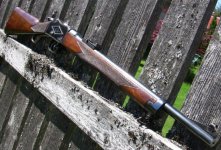elpac3
Member
Working up some new loads fro the .22 hornet using 11.8 grains of WW 296 (bottom end load) with a 30 grain Barnes Varment Grenade bullet. Using a mixed lot of Winchester and Remington brass with 6-8 reloads on each. This was the 2nd reload for the PP brass with the 296 load.
After the range, got home, deprimed and cleaned the cases. Every PP case (total of 6) had a bright ring with a ridge just above the case web. Took the tubing cutter and opened up a case and sure enough, there was definate thinning of the brass at the web.
No issues with the Winchester or Remington brass. Not sure how the PP cases would hold up with the next reload so they got pitched. Over all, pretty disappointing to only get two reloads on a case. Not sure how PP is making their brass. Have not cut apart any of the Winchester or Remington cases to measure case wall thickness but looks like incipient case head separation on the PP brass. Not sure they will be finding their way onto the loading bench any time soon in the future.
After the range, got home, deprimed and cleaned the cases. Every PP case (total of 6) had a bright ring with a ridge just above the case web. Took the tubing cutter and opened up a case and sure enough, there was definate thinning of the brass at the web.
No issues with the Winchester or Remington brass. Not sure how the PP cases would hold up with the next reload so they got pitched. Over all, pretty disappointing to only get two reloads on a case. Not sure how PP is making their brass. Have not cut apart any of the Winchester or Remington cases to measure case wall thickness but looks like incipient case head separation on the PP brass. Not sure they will be finding their way onto the loading bench any time soon in the future.








